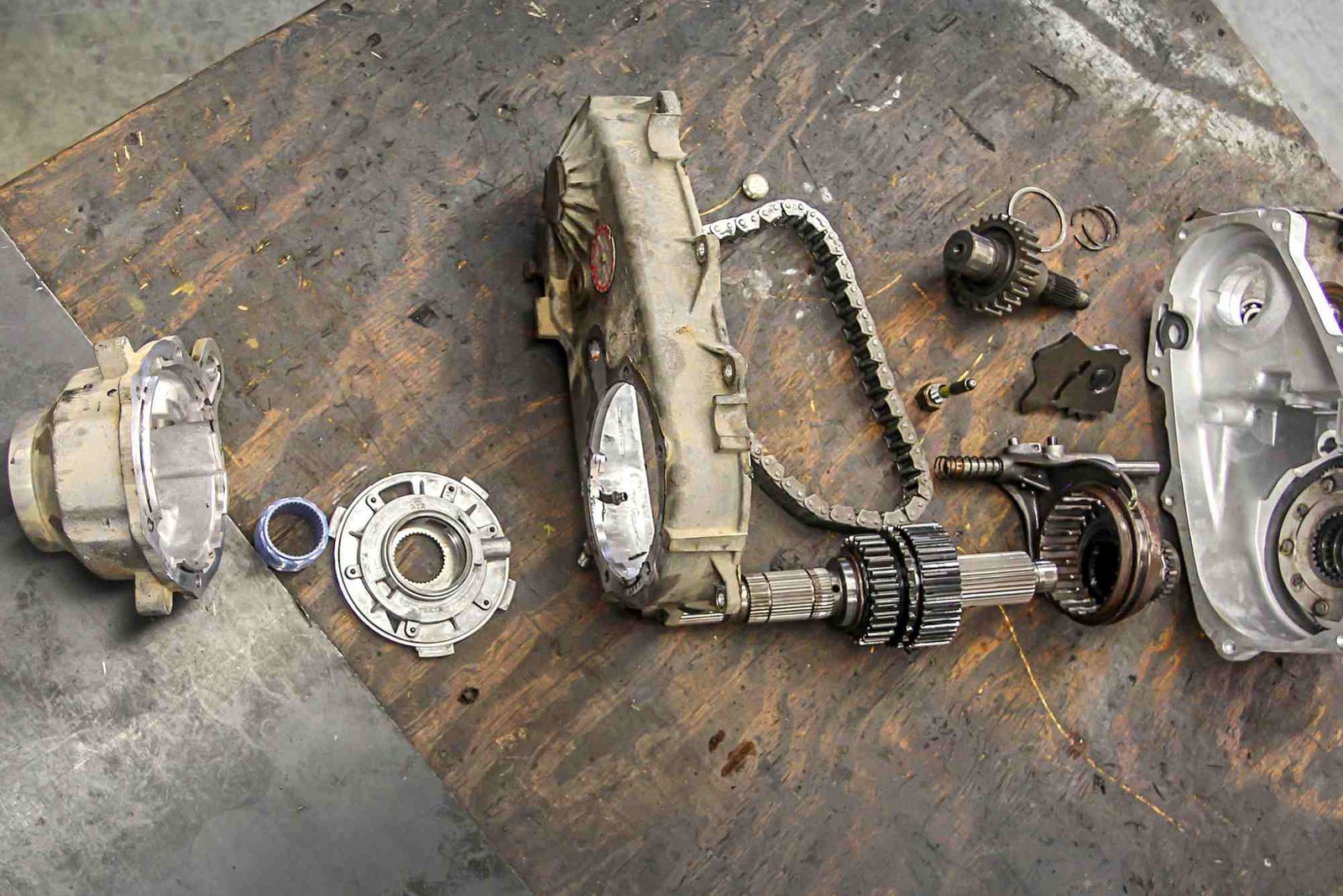What Is Transfer Case In Automobiles — Tips, Examples & Best Practices
When you think about four-wheel-drive (4WD) or all-wheel-drive (AWD) vehicles, one key component that keeps everything running smoothly is the transfer case. Understanding what is transfer case in automobiles is essential if you want to appreciate how power is distributed between your vehicle’s front and rear axles. This component plays a major role in off-road driving, towing, and handling challenging terrain.
In this detailed guide, we’ll break down everything you need to know — from how a transfer case works to the best practices for maintaining it. If you’re an automobile enthusiast or someone simply curious about your vehicle’s drivetrain, this article is your complete quick guide.
Understanding What a Transfer Case Does
A transfer case is a vital part of vehicles equipped with either four-wheel-drive or all-wheel-drive systems. It’s typically attached to the transmission and helps split the engine power between the front and rear axles.
In simple terms, it allows all four wheels to receive power, ensuring better traction and control — especially on slippery, uneven, or off-road surfaces. Without a transfer case, a 4WD system couldn’t function as intended.
Many drivers ask, “What is transfer case in automobiles — quick guide?” The simplest answer is that it’s a mechanical device that ensures both axles of a vehicle can receive power when needed, allowing for smoother, more stable driving on all kinds of surfaces.
How a Transfer Case Works
To understand its operation, imagine the engine producing power that flows to the transmission. From there, the transfer case takes this power and directs it to the drive shafts connected to the front and rear axles.
There are two main operating modes:
Four-Wheel Drive (4WD) — In 4WD systems, the transfer case distributes torque equally to both front and rear axles. This improves traction, making it ideal for rugged terrains like mud, sand, or snow.
All-Wheel Drive (AWD) — In AWD systems, the transfer case (often called a center differential) adjusts the torque dynamically between axles, ensuring better grip and balance on all surfaces.
Some modern transfer cases also offer multiple modes, such as 2WD High, 4WD High, and 4WD Low. These modes let the driver choose between fuel efficiency (2WD) and enhanced power and control (4WD Low).
Types of Transfer Cases
There are generally two types of transfer cases used in modern automobiles:
Gear-Driven Transfer Case
This type uses gears to transfer power. It’s extremely durable and preferred in heavy-duty vehicles like trucks and off-road SUVs. However, it’s often heavier and noisier than other types.
Chain-Driven Transfer Case
Chain-driven systems use a steel chain to transfer power, making them lighter and quieter. They’re commonly found in most modern SUVs and pickup trucks due to their smoother performance and efficiency.
Both types perform the same essential job — distributing power between the front and rear axles — but they differ in how they achieve that balance.
Importance of a Transfer Case in Automobiles
A transfer case isn’t just another part of your drivetrain; it’s the heart of any vehicle that relies on both front and rear wheels for movement. It ensures that torque is delivered efficiently, improving traction, stability, and vehicle control.
Here are a few key benefits:
- Enhanced off-road capability.
- Improved handling on slippery roads.
- Balanced torque distribution for better traction.
- Greater towing power and hill-climbing ability.
Without a functional transfer case, a 4WD or AWD system becomes ineffective, leaving your vehicle unable to distribute power correctly between wheels.
Common Problems With Transfer Cases
Like any mechanical part, transfer cases can experience wear and tear over time. Understanding these problems helps you catch them early and avoid costly repairs.
Fluid Leaks
Transfer cases rely on special lubricants to function smoothly. Leaks can lead to overheating, friction, and even gear damage.
Grinding or Whining Noise
Strange noises, especially when shifting between 2WD and 4WD, often signal internal wear or low fluid levels.
Difficulty Shifting Modes
If your vehicle struggles to switch between drive modes, the transfer case motor or linkage may be failing.
Warning Lights
Modern vehicles display warning messages or lights when the transfer case detects a fault. Always get it checked immediately.
Best Practices for Maintaining a Transfer Case
Proper maintenance ensures longevity and prevents expensive breakdowns. Here are the best practices every driver should follow:
Regular Fluid Checks: The transfer case fluid lubricates internal components and keeps the system cool. Always check the fluid level as per the manufacturer’s schedule, usually every 30,000 to 60,000 miles.
Timely Fluid Replacement: If the fluid becomes dirty or low, replace it promptly. Contaminated fluid can cause premature wear and tear.
Engage 4WD Periodically: If you don’t use your 4WD mode often, engage it occasionally to keep the internal parts lubricated.
Avoid Sudden Mode Changes: Shifting from 2WD to 4WD at high speeds can cause mechanical strain. Always switch modes as recommended in the owner’s manual.
Check for Leaks: Inspect under the vehicle for any signs of leaks or fluid drips, especially around the transfer case seals.
By following these practices, you’ll extend the life of your transfer case and ensure smoother vehicle performance.
Examples of Vehicles With Transfer Cases
Many popular vehicles use transfer cases to enhance performance. For example, the Toyota Land Cruiser, Ford F-150 Raptor, and Jeep Wrangler Rubicon all feature robust transfer cases for off-road dominance.
Luxury vehicles like the Audi Q7 and Range Rover also include advanced AWD systems with electronically controlled transfer cases for seamless power distribution and comfort.
These examples show how transfer cases serve both rugged and refined vehicles, improving safety and stability across diverse driving conditions.
Tips for Buying or Replacing a Transfer Case
If you ever need to buy or replace your vehicle’s transfer case, consider these essential tips:
- Check Compatibility: Always choose a transfer case designed for your vehicle model and drivetrain type.
- Buy OEM or High-Quality Aftermarket: Original Equipment Manufacturer (OEM) parts ensure reliability and fit perfectly.
- Seek Expert Installation: Incorrect installation can cause alignment issues and premature failure.
- Inspect for Warranty: Choose transfer cases that come with manufacturer warranties for peace of mind.
Replacing a transfer case is an investment in your vehicle’s long-term performance, so make sure you pick the right one.
FAQs
What is the purpose of a transfer case in a car?
A transfer case splits the engine’s power between the front and rear axles, enabling four-wheel or all-wheel drive for better traction.
How do I know if my transfer case is bad?
Look for symptoms like grinding noises, trouble shifting modes, or fluid leaks. These often indicate internal wear or low fluid levels.
Can I drive without a transfer case?
No. In a 4WD or AWD vehicle, the transfer case is essential. Without it, power cannot be distributed to all four wheels.
How much does it cost to replace a transfer case?
Replacement costs can range from $1,000 to $3,000, depending on your vehicle type and the labor involved.
Is transfer case fluid the same as transmission fluid?
Not always. Some vehicles use specialized transfer case fluids. Always check your owner’s manual for the correct specification.
Understanding what is transfer case in automobiles gives you a deeper appreciation of how your vehicle maintains traction, balance, and control. This essential component ensures your car performs well on highways and rugged terrains alike.
By maintaining your transfer case properly, you can enjoy smoother rides, improved handling, and longer vehicle life. Whether you drive a compact SUV or a full-sized pickup, keeping this system in top shape is key to safe, reliable driving.
If you want to dive deeper into technical insights and expert automobile tips, visit What Is Transfer Case In Automobiles — Quick Guide for a detailed reference. You can also Browse More Automobile Articles to expand your knowledge or get practical car maintenance advice from trusted sources like Edmunds – Car Advice.







